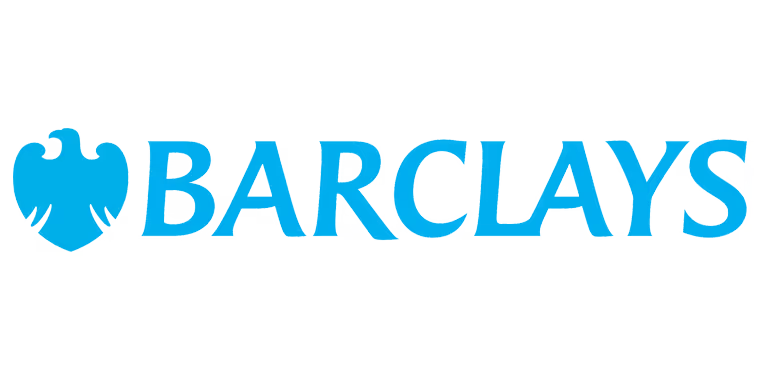6 Ways To Deal With The Turnover Of Warehouse And Shift Based Staff
.avif)
What can you do to reduce warehouse staff turnover?
Warehouse and shift-based staff are in high demand; with expanding businesses and an ever-increasing need for the right labour force, it can be hard to keep up. This is more relevant now than ever before with the shadow of a pandemic still lingering and a fractious global economy leading to a dramatic shift towards eCommerce. In an age where the word “unprecedented” gets thrown around as frequently as you would ask if your team can hear you on a conference call, it’s true to say that there really has been an unprecedented growth in global traffic in the last few years. In 2021, global retail eCommerce sales amounted to approximately $4.9 trillion in U.S. dollars.
Projections indicate that over the next three years, this figure is expected to surge by 56%, reaching approximately $8.1 trillion by 2026. The continued momentum of online shopping shows no sign of slowing down in the foreseeable future, nor does the need for the right workforce who can manage such an influx.
Experienced and reliable warehouse staff are needed now more than ever and with increased competition, it becomes ever more important to successfully attract and retain the talent you need.
Did you know that it can cost an average of 25% of a warehouse worker’s salary to replace that member of staff? This becomes a significant overhead if you have an already high staff turnover. So, how can you deal with the turnover of warehouse-based staff? Here, we have identified six ways:
1. Conduct Exit Interviews To Understand Why Staff Are Leaving
Feedback is key: like a leaking pipe, you need to know the underlying cause to stop it from continuing. If you want to make changes, you need to understand what the problems are. What better way to figure this out than to ask your employees directly? Perhaps introduce a standard set of questions and conduct exit interviews to see if you can identify trends that show the reasons staff are leaving – a standard line of questioning makes this an easy and efficient process for you.

You can get some ideas from Glassdoor which can help you formulate your questions. There may be some things that you can never change, but if relevant and solvable concerns are raised, you may be able to prevent further employees from leaving and increase staff retention. This has a knock-on effect of showing you care as an employer and are willing to listen to concerns raised and take this feedback on board. Word of mouth can be a deciding factor when it comes to new applicants, so you want the last experience for employees leaving to be just as good as the ones entering your employment.
2. Ensure Security And Stability Remain At The Forefront Of Your Values
As unemployment rates continue to rise, employees want to know that they can provide for themselves and those who depend on them. The unemployment rate for April to June 2023 increased by 0.3 per cent in the quarter to 4.2% and is set to increase to 4.5% by the end of 2024. For any company able to offer any form of security or stability, it automatically becomes a desirable employer. Top employers have been known to pay their warehouse staff at least 50% above minimum wage, for instance. How does your compensation structure compare?

Regular performance and pay reviews are recommended as this can provide an opportunity for pay increases based on merit and hard work and encourage productivity. You can also consider the number of holiday days that employees are entitled to; which includes sick pay and maternity/paternity pay policies as well – you can find UK-specific information here. Of course, pay alone will not be the only way you can retain staff, but it is a solid foundation on which to build upon.
3. Explore Staff Transport Programs
Safety measures touch most aspects of your business, none more so than ensuring your staff can get to work safely and efficiently. The average employer spends roughly 59 minutes a day travelling to work in their car. As a result, one of the leading causes of stress in the workplace can be the daily commute, with employees struggling to navigate rush hour traffic or find a parking space. This is particularly common for those working in warehouses, where large numbers of employees are travelling to work at the same time. But what about those who can ill afford to own or run a car? Social & labour mobility issues are a rising concern around the world with individuals falling trapped to unemployment or lower-paid jobs simply because they can't afford a car or access reliable and affordable public transportation, both of which are needed to access new opportunities.
Zeelo has helped a leading food production worksite in the US generate a positive ROI through temp conversion saving over $330,000

"We saved £420,000 in staff recruitment over one year by offering an alternative transport solution to our site. Zeelo's transport options allowed us to unlock new recruitment pools and attract the best employees." HR Department, The Ocado Group
Owning a car costs 24% of the average gross disposable income for workers. This, combined with the aforementioned issues surrounding the daily commute, means that the journey to work is often far more of a burden than it may initially seem. In fact, 63% of employees would consider turning down a job because of the time and cost associated with commuting. By alleviating these pressures on workers, you could dramatically reduce recruitment costs and see staff attrition rates lowered.
Cars continue to be the leading mode of transport to work, and increased usage due to changing attitudes and travel preferences has only created more congestion and frustration. By providing commuter transport you can give your staff a safe, relaxed and easy way to get to work, especially when shift times might be erratic or outside standard working hours. Commuter shuttles, like those offered by Zeelo, can provide a calm and comfortable way for your employees to travel to and from work and arrive ready for their shift stress-free. Workers can be collected from designated pick-up points selected by you and dropped off in time for their shift to start. What’s more, offering staff transport can open new candidate pools for recruitment and in a varied shift environment you may be surprised at just how cost-effective the clever utilisation of shared transport can be.
4. Provide Regular And Consistent Training Opportunities
After the initial training that all employees undergo upon joining your company, what does any subsequent staff training entail?
Regularly conducting updated regulatory compliance and health and safety training is essential to ensure that your staff stay current. Going above and beyond this and actually investing in staff learning and development can yield mutual benefits; both empowering and motivating your team to progress while allowing your business to reap the rewards of having well-trained employees. When employees feel they are growing within an organization, they are less likely to seek opportunities elsewhere. Paid training days are an effective means of ensuring comprehensive coverage, and it's also important to solicit input from your staff regarding their training needs. The pandemic saw a marked and significant shift towards online learning, and the digital space for upskilling will only continue gaining prominence.
Delivering training has become exceptionally cost-effective and more accessible than ever. Instead of consuming precious work hours by sending employees to off-site courses, they can now undertake training from the comfort of their own homes. Identify individuals who are seeking career advancement or training for new roles, and support them in making those transitions within your organization, thereby reducing the likelihood of them seeking opportunities elsewhere. Embrace innovative training methods that offer mutual benefits for your business and your employees as individuals; you can discover creative course ideas here.
5. Provide Employees With Incentives To Remain With The Company, Ensuring They Feel Acknowledged And Well-Supported
In addition to offering competitive wages and fostering their professional growth, what else can inspire your employees to agerly come to work each day? Enhancing employee satisfaction goes beyond mere monetary compensation, as this is often a short-term remedy. One effective approach to acknowledging your staff's dedication is by introducing a loyalty bonus program, demonstrating your commitment to their long-term growth within the company. The implementation of bonuses brings various advantages, notably promoting internal consistency and portraying a positive image to external stakeholders.

Recognition also goes a long way; additional annual leave or bonuses for high-performing staff can be a great incentive. People like their hard work to be acknowledged, and if you show that you have taken note and give praise where praise is due, you will be more likely to retain staff and nurture a happier work environment.
That’s the recognition, but what about the support? With the extra strain the pandemic has put on people, it is imperative that your staff know they have your backing as an employer. Whether that is acclimating to new ways of working, managing additional home pressures or struggling with mental health, the challenges we all face can stack up. Creating a support network for your workers to know they are safe and have somewhere to turn is an invaluable tool at your disposal. It can be advantageous to you too, employees that are at ease in the workplace can find themselves far more productive. By taking a few simple steps, your staff are much more likely to recommend you as an employer to others and as such do wonders for your brand and reputation.
6. Maintain A Safe Workplace
Maintaining a safe workplace in a warehouse environment is paramount to ensuring the well-being of employees and the smooth functioning of daily operations. Warehouses can be bustling hubs of activity, with heavy machinery, high shelves, and various materials in constant motion. To guarantee that workers feel secure at work, stringent procedures and health and safety measures are essential. This includes regular equipment maintenance, training programs to educate employees on safe practices, and the use of personal protective equipment (PPE) where necessary.

Clear signage, well-organised storage, and efficient traffic flow are also vital for minimising accidents and ensuring a safe working environment. Furthermore, a culture of safety awareness and open communication channels for reporting concerns or incidents play a crucial role in creating an atmosphere where workers can confidently perform their duties while knowing that their employer prioritises their safety above all else.
How Will You Deal With The Turnover Of Warehouse Staff?
It may be disheartening when your warehouse staff turnover is high, but there are some things you can do to retain your staff, boost your brand's reputation and save you time and money. Prevent the costly recruitment of new staff by keeping your best employees happy and motivated to stay; whether this is through offering loyalty perks and relevant training or the provision of commuter transportation programs to get your staff to work stress-free and relaxed. By prioritising employee wellbeing and retention your business can soon be known as a positive contributor to social and labour mobility, as well as as a great employer within your industry.
Find out how Zeelo can help you with your recruitment and retention issues today!
We help companies and schools achieve their transportation program goals
Corporate shuttles


Warehouse/Distribution


Schools & Universities


Become a partner


Want to know how we can help you?











.avif)
.avif)
